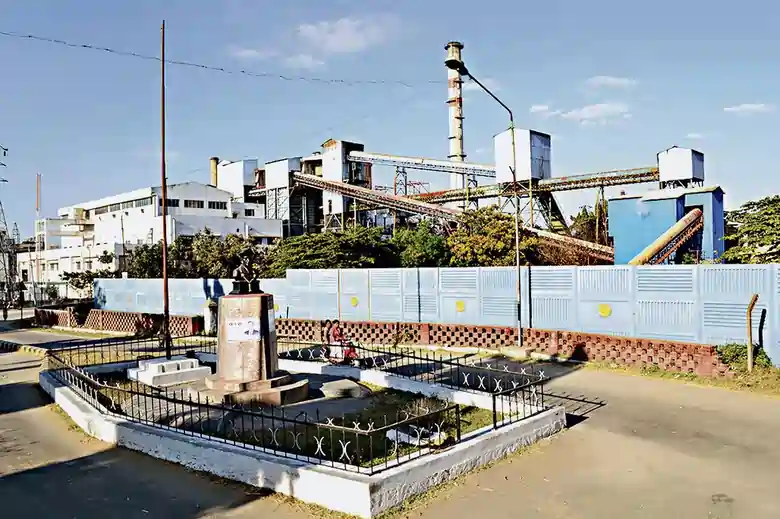New Delhi: In a landmark decision, the Indian government has lifted all quantitative restrictions on ethanol production from sugarcane juice, sugar syrup, and molasses for the Ethanol Supply Year (ESY) 2025-2026, spanning November 2025 to October 2026. This policy, announced on September 2, 2025, by the Ministry of Consumer Affairs, Food & Public Distribution, reverses earlier limitations imposed due to reduced sugarcane supplies. The move aligns with India’s ambitious goal of achieving 20% ethanol blending in petrol by ESY 2025-26, reinforcing the country’s commitment to sustainable energy, reduced carbon emissions, and economic benefits for farmers and the sugar industry.

Policy Details: Unrestricted Ethanol Production
The Ministry’s notification explicitly allows sugar mills and distilleries to produce ethanol from sugarcane juice, sugar syrup, B-heavy molasses, and C-heavy molasses without any volume caps during ESY 2025-2026. This decision follows a period of restricted production in ESY 2024-25, where the government capped sugar diversion for ethanol at 40 lakh tonnes to address a decline in sugarcane availability. To balance biofuel production with domestic sugar demand, the food ministry, in collaboration with the petroleum ministry, will conduct periodic reviews to ensure a steady supply of sweetener in the market.
The Ethanol Supply Year, running from November to October, aligns with India’s sugarcane harvesting cycle. The unrestricted policy, effective from November 1, 2025, reflects confidence in improved sugarcane yields, driven by two consecutive years of ample monsoon rains that have enabled farmers to expand cultivation areas.
Alignment with National Policy on Biofuels 2018
This policy shift is rooted in the National Policy on Biofuels 2018, amended in 2022 to accelerate India’s ethanol blending target from 2030 to ESY 2025-26. The policy broadens the scope of raw materials for ethanol production, including sugarcane juice, sugar beet, sweet sorghum, corn, cassava, damaged food grains (such as wheat and broken rice), and rotten potatoes unfit for human consumption. This diversity reduces reliance on single crops and promotes the use of agricultural waste, enhancing sustainability.
India, the world’s second-largest sugar producer and third-largest oil importer, has prioritized the Ethanol Blended Petrol (EBP) programme to integrate ethanol into gasoline. As of July 31, 2025, Public Sector Oil Marketing Companies (OMCs) reported an average ethanol blending rate of 19.05% for ESY 2024-25, with the country already achieving an overall 20% blending milestone. This progress underscores India’s rapid advancement toward its biofuel targets.
What Are Biofuels? Benefits and Applications
Biofuels are renewable fuels derived from biomass, available in liquid or gaseous forms. They serve as alternatives or additives to fossil fuels like diesel and petrol, used in transportation, stationary, and portable applications. Examples include Ethanol and Compressed Bio Gas (CBG). The EBP programme specifically promotes ethanol blending in petrol, a cornerstone of India’s green energy strategy.
The benefits of biofuels are significant:
- Environmental Impact: One crore litre of E-10 (10% ethanol blend) reduces CO2 emissions by approximately 20,000 tons, contributing to cleaner air and alignment with global climate goals.
- Economic Savings: Over the past decade, ethanol blending has saved India over Rs. 1,10,000 crore in foreign exchange by reducing oil imports, bolstering energy security.
- Resource Efficiency: Utilizing damaged grains and rotten potatoes minimizes agricultural waste, creating value from otherwise unusable produce.
Historical Context: From Restrictions to Liberalization
In ESY 2024-25, the government restricted ethanol production from sugarcane due to a shortfall in supply, limiting sugar diversion to 40 lakh tonnes. This cautious approach ensured domestic sugar availability but constrained ethanol output. However, favorable monsoon conditions in 2024 and 2025 have boosted sugarcane cultivation, prompting the government to lift these restrictions.
A Maharashtra-based sugar miller welcomed the policy, stating, “This is a welcome move. The government should also raise the ethanol procurement price so that mills can pay farmers the government-fixed cane price.” This sentiment reflects the industry’s optimism and the need for supportive pricing mechanisms to ensure fair compensation for farmers.
Impact on the Sugar and Ethanol Industry
India’s sugar industry has increasingly pivoted toward ethanol production, with major players like E.I.D.-Parry, Balrampur Chini Mills, Shree Renuka, Bajaj Hindusthan, and Dwarikesh Sugar expanding their distillery capacities. These companies, listed on the National Stock Exchange (EIDP.NS, BACH.NS, SRES.NS, BJHN.NS, DWAR.NS), have invested heavily in infrastructure to process diverse feedstocks, positioning themselves to benefit from the unrestricted policy.
The policy is expected to:
- Boost Revenues: Sugar mills can now divert surplus sugarcane to ethanol without limits, increasing profitability.
- Support Farmers: Higher ethanol production creates a stable market for sugarcane, ensuring timely payments and price stability.
- Advance Energy Goals: Increased ethanol output will help India meet its 20% blending target, reducing reliance on imported oil.
Environmental and Economic Implications
The environmental benefits of ethanol are profound. By reducing CO2 emissions, ethanol blending supports India’s commitments to combat climate change. The economic advantages are equally compelling, with significant foreign exchange savings enabling investments in renewable energy and infrastructure. Additionally, the use of non-edible feedstocks like damaged grains enhances resource efficiency, aligning with circular economy principles.
Future Outlook: Achieving the 20% Blending Target
With ethanol blending at 19.05% as of July 31, 2025, and an overall achievement of 20%, India is well-positioned to meet its ESY 2025-26 target. The 2022 amendment to the National Policy on Biofuels accelerated this timeline, reflecting proactive governance. However, challenges such as ensuring competitive ethanol procurement prices remain, as mills need to balance operational costs with farmer payments.
Conclusion: A Strategic Leap Toward Sustainability
The decision to lift restrictions on ethanol production from sugarcane juice, syrup, and molasses for ESY 2025-2026 is a pivotal step in India’s journey toward sustainable energy. By enabling unrestricted production, supporting farmers, and advancing environmental goals, this policy strengthens India’s position as a leader in biofuels. With periodic reviews ensuring domestic sugar supply, the government has struck a balance between energy innovation and food security. This comprehensive overview, covering policy details, industry impacts, and stakeholder reactions, provides a definitive resource for understanding this transformative move.
Frequently Asked Questions (FAQs)
1. What is the new ethanol production policy for ESY 2025-2026 in India?
The Indian government has lifted all quantitative restrictions on ethanol production from sugarcane juice, sugar syrup, B-heavy molasses, and C-heavy molasses for the Ethanol Supply Year (ESY) 2025-2026, running from November 2025 to October 2026. This allows sugar mills and distilleries to produce ethanol without volume caps, reversing earlier restrictions imposed in ESY 2024-25 due to reduced sugarcane supplies.
2. Why did the government remove restrictions on ethanol production?
The decision follows two consecutive years of ample monsoon rains, which have boosted sugarcane cultivation and are expected to increase supplies in the upcoming season. The policy aligns with India’s goal of achieving 20% ethanol blending in petrol by ESY 2025-26, promoting energy security, reducing oil imports, and supporting environmental sustainability.
3. How will the government ensure domestic sugar availability?
The Ministry of Consumer Affairs, Food & Public Distribution, in collaboration with the petroleum ministry, will periodically review the diversion of sugar to ethanol production. This ensures a steady supply of sugar in the domestic market, preventing price spikes or shortages while supporting biofuel goals.
4. What are the benefits of ethanol production from sugarcane?
Ethanol production reduces CO2 emissions (e.g., one crore litre of E-10 saves 20,000 tons of CO2), saves foreign exchange (over Rs. 1,10,000 crore in the last decade), and supports farmers by providing a stable market for sugarcane. It also promotes resource efficiency by utilizing damaged grains and other feedstocks.
5. Which companies are likely to benefit from this policy?
Major sugar mills with expanded ethanol production capacities, such as E.I.D.-Parry, Balrampur Chini Mills, Shree Renuka, Bajaj Hindusthan, and Dwarikesh Sugar, are poised to benefit. The policy enables these companies to divert surplus sugarcane to ethanol, boosting revenues and supporting rural economies.

